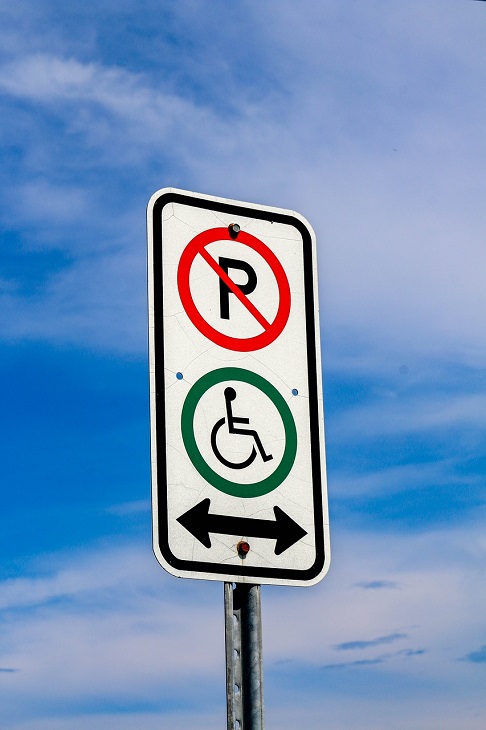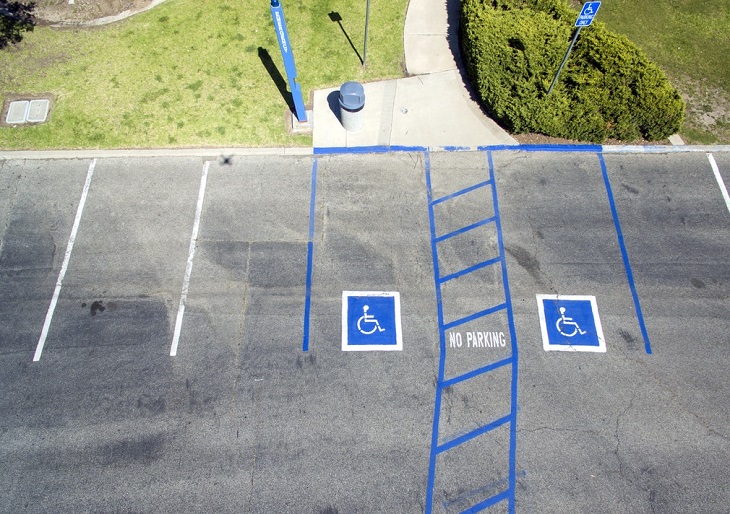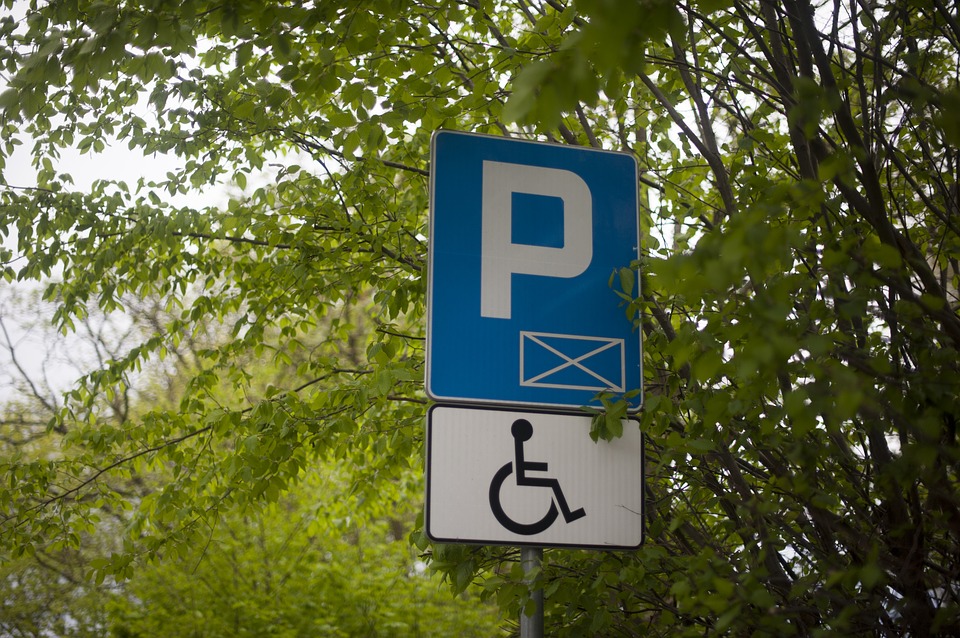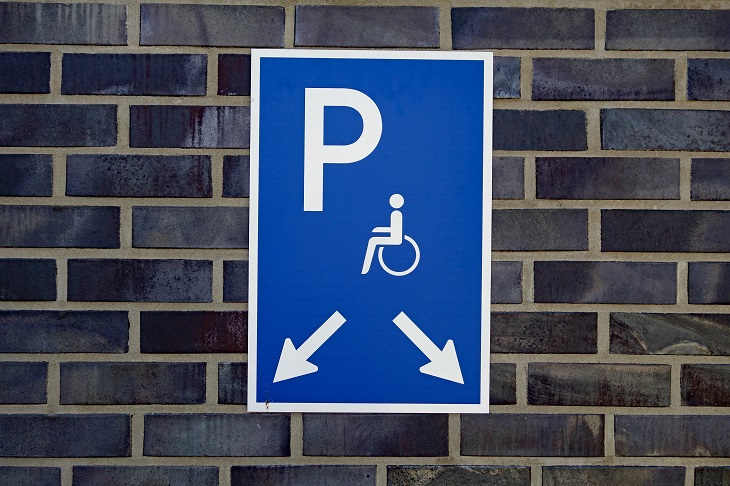Accessible parking is vital to many people, especially those with a disability that impacts mobility. If you’re new to the world of accessible parking, then you may have a lot of questions. “Do handicap spots have to have blue lines?” is just one of the many things that are important to know for those who utilize disabled parking. There are many things to understand about the different visual designation requirements for disabled parking spaces.
If you’re wondering how to know if a spot is a handicap parking spot, then keep reading. That and many other questions will be answered here!
The ADA and You
The Americans with Disabilities Act (ADA), in conjunction with state laws, requires public agencies and private businesses to provide accessible parking. The number of spaces in each lot, as well as how they are marked, is dictated by the ADA, which is why signage is universal. Even older lots built before the law took effect to have to meet these requirements if lot is upgraded or a new one is built.
The location of disabled parking spots is also specified by law. They must be in a location that allows the most accessible and shortest route to a building. They also have to be a minimum of eight feet wide and have an aisle adjacent that is five feet wide; spots accessible for handicap vans must be 11 feet wide. A path to the building must also be provided.
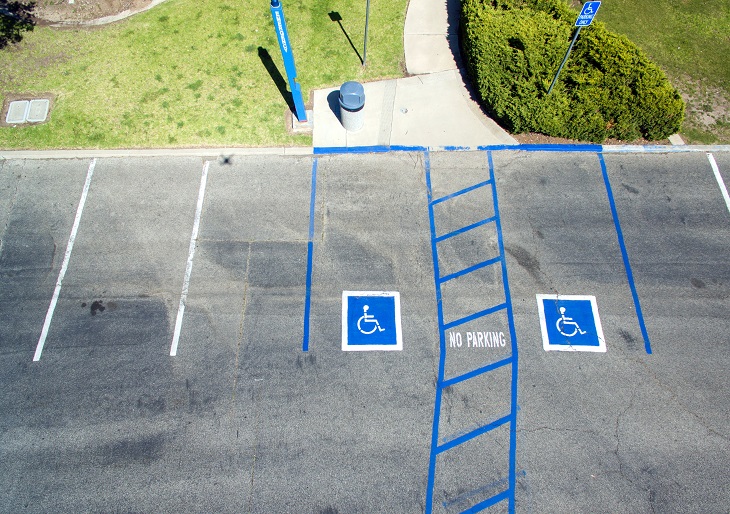
Do Handicap Signs Have To Be Blue?
Under the ADA, every disabled parking space has to be properly designated with signage. These signs must have the “Universal Symbol of Accessibility” on them – the standard image that comes to mind when you think about disabled parking spaces of a person in a wheelchair: a blue sign with white letters and symbols.
These signs must be blue – it’s the universal color so that they are recognizable no matter where you are in the United States. Aside from color, they also must be at least five feet off the ground so they can be seen even when a car is parked in the space. Spaces for accessible vans must say “van accessible” on the sign.
What Are The Yellow Lines Next To Handicapped Parking?
You may also have noticed yellow or blue lines next to disabled parking spots. What are those? The explanation is fairly straightforward: these are stripes that denote no one should park there because the extra space is needed in order for wheelchair users to deploy a ramp to get out of their van, or to have easier access in and out of their vehicle when transferring to and from their wheelchair.
Remember, if you see yellow or blue stripes in parking lots, those are for the use of disabled persons who may need the extra space to get in and out of their vehicles. They are not parking spots, and they are not areas where you can leave shopping carts or otherwise block in any fashion.
What If There’s No Handicap Parking Sign?
You may come across parking spaces that have handicap symbols printed on the ground but no other signage denoting that it is a handicap parking spot. This is against the ADA rules, as every parking space for disabled persons is supposed to be marked by a sign. There are no regulations for symbols on the pavement.
There are exceptions to signage laws under the ADA for parking lots that have four or fewer parking spaces. Residential lots with assigned parking spots also do not need to have signage denoting spaces as handicap parking spaces.
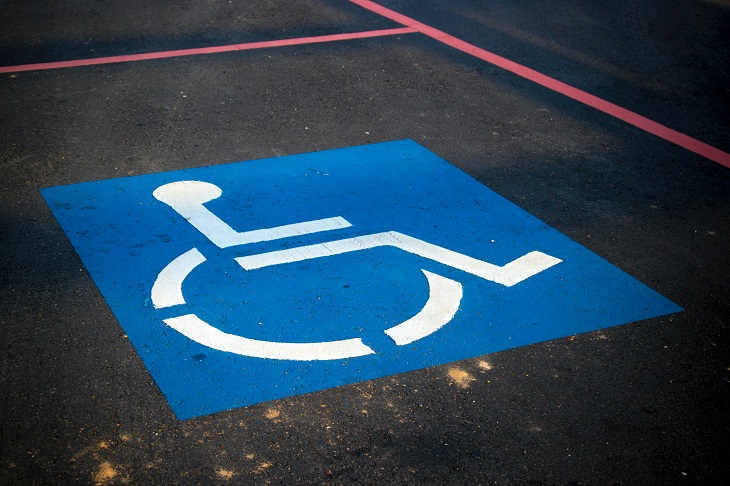
The Americans with Disabilities Act is enforced by the U.S. Department of Justice. Violations of the ADA rules when it comes to parking spots against both businesses and individuals who don’t comply with parking requirements can be severe. There are civil penalties for non-compliance up to $150,000 – and that’s just for a first violation. The best rule of thumb if you own or operate a business or other public facility under the purview of the ADA is to understand the laws and follow them to the letter.
Disabled parking is very important to those who need it, and luckily, it’s pretty easy to spot the signs that let those with disabilities know where they can park for the best access.
Featured image by Robert Ruggiero on Unsplash
